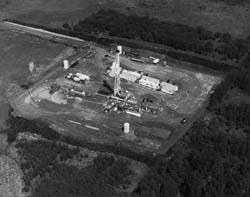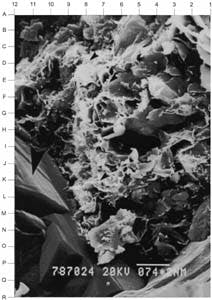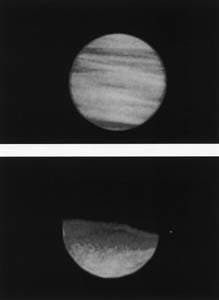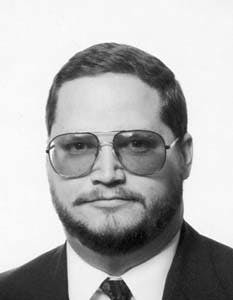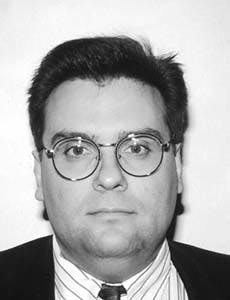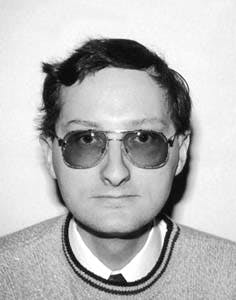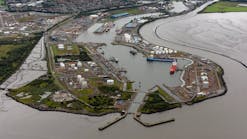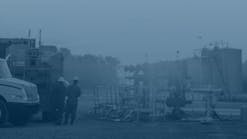TECHNOLOGY Properly designed underbalanced drilling fluids can limit formation damage
P.L. Churcher, Fred J. Yurkiw
PanCanadian Petroleum Ltd.
CalgaryRon F. Bietz, D. Brant Bennion
Hycal Energy Research Ltd.
Calgary
Cactus Drilling's rig No. 21 drilled the PCP 1-7-44-2W5 underbalanced horizontal well in the Westerose field, located about 45 miles south of Edmonton, in July 1995 (Fig. 1).
Drilling fluids for underbalanced operations require careful design and testing to ensure they do not damage sensitive formations.
In addition to hole cleaning and lubrication functions, these fluids may be needed as kill fluids during emergencies.
PanCanadian Petroleum Ltd. used a systematic approach in developing and field testing a nondamaging drilling fluid. It was for use in underbalanced operations in the Glauconitic sandstone in the Westerose gas field in Alberta.
The Westerose gas field is in central Alberta approximately 45 miles south of Edmonton (Fig. 1). Rich gas, containing up to 300 cu m of liquids per million cu m of gas, is produced from the tight sandstone of the lower Cretaceous Glauconitic formation at an average depth of 1,850 m and an average reservoir pressure of 15.5 MPa. The original gas in place for this field is about 30 billion cu m (1.2 tcf).
The Glauconitic formation is 20-30 m thick. It can be divided into an upper, permeable (1-10 md) sand and a lower, tight sand (generally less than 0.5 md). An impermeable shaley siltstone separates the upper and lower sands (Fig. 2 [34837 bytes]). The reservoir quality of the lower sand is relatively uniform across the area, but the upper sand is highly variable.
In some cases this sand forms permeable barrier bars. In others, the upper sand is similar in quality to the lower sands. Because of these extreme variations in the reservoir quality, PanCanadian had to design and test a tailored drilling fluid for use in development drilling.
In the spring of 1994, a vertical well (11-15) was drilled with a water-free diesel mud system at near balanced conditions (Fig. 3 [42542 bytes]). A core was cut using low-invasion drilling technology to determine the in situ water saturation. The prefrac flow and pressure build-up tests on this well, along with cost and operational considerations, indicated that the diesel system may not be the best fluid for drilling the horizontal wells.
A lab study was initiated to develop and test a nondamaging water-based drilling fluid for the horizontal well pilot project. The need to develop an inexpensive, nondamaging drilling fluid was previously identified during underbalanced drilling operations in the Weyburn field in southeastern Saskatchewan. A nondamaging fluid is required for hole cleaning, for lubrication of the mud motor, and for use as a kill fluid during emergencies.
In addition, a nondamaging fluid is required when drilling with a conventional rig because pressure surges during connections and trips may result in the well being exposed to short periods of near balanced or overbalanced conditions. Without the protection of a filter cake, the drilling fluid will leak off into the formation, causing damage. The amount of damage is related to the rate of leak off and depth of invasion, which are directly proportional to the permeability to the fluid.
Petrographic analysis
A comprehensive lab program was developed to identify the key formation damage mechanisms that adversely affect production in the Glauconitic sand. The first step was to determine the type, amount, and distribution of the clay minerals in the sand. This step was accomplished by using scanning electron microscopy (SEM).
X-ray diffraction (XRD) analysis was also performed on the rock samples; however, XRD significantly underestimated the amount of fine-grained, mixed-layer, illite-smectite clay (Table 1 [11818 bytes]). In addition to examining the fines, the SEM was used to determine the 3D distribution of the pores and the affect of the presence of microporous chert grains and lithic fragments on the pore geometry and permeability.
The petrographic analysis indicated that significant amounts of illite-smectite clay are in the pore space of the reservoir-quality rock and that these minerals substantially reduce the permeability (Fig. 4). Cherty and lithic grains, bitumen, and quartz overgrowths further reduce the permeability of these rocks.
Mercury porosimetry was performed on four small plugs to define quantitatively the distribution of the pore throat sizes. The four plugs chosen for these analyses covered a broad range of porosity and permeability in the reservoir. This information was used to determine what particle sizes may form bridges on the sand face during periods of hydrostatic overbalance that might occur during drilling.
An estimate of the irreducible water saturation was also obtained for each porosity range. These data helped assess the potential for damage because of spontaneous imbibition of water-based fluids.
The average pore throat size in the reservoir ranges 2-7 m. Drilled solids smaller than 2 m will likely enter these sands during hydrostatic overbalance. Therefore, care must be taken to maximize hole cleaning efficiency to reduce the amount of fines in the well bore. In turbulent flow, these fines will be carried to surface and removed.
The irreducible water saturation ranged from 23 to 39%.
Laboratory flow tests
The laboratory flow tests conducted on the core are divided into three groups. Details of the specific methodology for each of these tests can be found in the literature.1
The first group of tests examined the potential of the rocks to damage from fines migration. This damage is usually induced during conditions of hydrostatic overbalance pressure where leak-off rates (and interstitial velocities) are high.
The second group of tests examined the sensitivity of the rock to injected fluids. Formation damage during these tests can occur from rock/fluid or fluid/fluid incompatibility.
The third group of experiments evaluated the risk of damage from liquid blocking or phase trapping. Damage occurs from the leak off and permanent retention of drilling and completion fluids, resulting in severe decreases in the relative permeability to gas. This type of damage can prevent the gas from flowing back into the well bore during cleanup.
Scanning electron micrograph (2,000 x magnification) showing abundant illite-smectite clays in the pore space (Fig. 4).
Sample screening
Prescreening core plugs for laboratory flow experiments is essential. These plugs simulate the sand face in the well bore and must not only be representative samples of the reservoir rock, but also relatively homogeneous to permit comparison of the results from testing a number of different fluids. The prescreening procedure consisted of conventional porosity and permeability measurements and magnetic resonance imaging (MRI).
The MRI has significant advantages over conventional X-ray or computer-aided tomography (CT) scanners in that it "sees" only the fluids in the pore space of the rock and not the rock itself. The image is brighter as porosity increases (Fig. 5).
The MRI scanner, in addition to conventional porosity and permeability measurements, facilitated the selection of "sister" plugs for the lab tests and enhanced the final interpretation of the lab results by removing some of the variables commonly introduced by using the rock as "a black box."
Fines migration tests
Fines migration tests were conducted on two samples. One sample had a low gas permeability (0.38 md), and the other had a significantly higher gas permeability (6.8 md).
Based on test results, very high leak-off rates (velocity greater than 1.5 m/day) must occur before any fines are mobilized. Even then, the damage reduced the permeability by less than 14%.
Thus, fines migration effects during most drilling and completions operations can be considered negligible.
Magnetic resonance images of two core plugs used in the study. Light areas indicate porous areas in the core. Both of these plugs have almost identical porosity (12%) and permeability (1.4 md), yet the way the porosity is distributed is quite different (Fig. 5).
Fluid sensitivity tests
The fluid sensitivity tests were conducted with several core plugs with similar baseline permeabilities to liquids (0.3 md). These tests began by establishing the permeability of the rock to the simulated formation brine (baseline permeability). The core plug was then flooded with the test fluid until a stabilized permeability was attained.
The difference between the baseline and the test fluid permeability was then calculated as a measure of the damage (permeability impairment) or stimulation (permeability enhancement). The cores were then flooded with freshwater to induce damage, thus establishing a severely damaged (worst case) permeability.
Five fluids were tested: 3% KCl, potassium acetate, Stable K, diesel, and a stabilized condensate (My-T-Oil).
The injection of ungelled diesel and condensate resulted in very little damage (<7.2% reduction in the baseline permeability). This reduction in permeability is likely due to relative permeability effects entirely.
The 3% KCl and potassium acetate filtrates increased permeability 31% and 9.7%, respectively. The increase in permeability is likely due to the collapse of the mixed-layer clay structure. These changes result from the substitution of the smaller potassium ion into the lattice of these swelling clays.
The Stable K resulted in a net loss of 17% of the baseline brine permeability. This test fluid differs from the other two in that it is a quaternary amine with some long-chained molecules in its structure. The fluid is designed more to bind the clays than it is to substitute potassium ionically. Based on these lab tests, a drilling fluid made of KCl would cause the least amount of damage because of fluid sensitivity.
All of the KCl and potassium acetate tests described in this article were performed on the same plug. The baseline and damaged baseline permeabilities could be restored in the core plug even after several cycles of injection (Fig. 6 [56453 bytes]). These results confirm that the primary damage mechanism in these rocks (excluding phase trapping) is clay swelling and not fines migration.
Phase trap tests
The next tests were performed to determine the affect of relative permeability effects (due to phase trapping) on the rock's ability to cleanup after leak off of drilling fluid into the near well bore. This damage is sometimes reversible if sufficient drawdown and cleanup time can be applied. In many cases, however, this is impractical in the field.
In these tests the initial water saturation (35%) was established, and the baseline gas permeability was measured. The core plugs were then flooded to residual gas saturation using the test fluid.
The amount of regain permeability was measured while the core plug was flooded with humidified gas at increasingly higher drawdown pressures. The maximum applied pressure drop across the core plugs did not exceed 7 MPa (equivalent to a 50% drawdown in the reservoir). Four fluids were tested on rocks with similar initial gas permeabilities (0.17-0.39 md). These fluids included 3% KCl, diesel, Superwet 250 (a surfactant), and Superfrac condensate.
Based on these tests, the best fluid was the ungelled Superfrac stabilized condensate (7.14% permeability reduction). Leak off of the KCl, diesel, and Superwet 250 reduced permeability 56%, 58%, and 80%, respectively. Care must be exercised to avoid phase trap damage during periods of hydrostatic overbalance.
Phase trap damage will cause difficulties cleaning up the well bore. The best method to avoid overbalance is to drill and complete the well in a continuously underbalanced mode.
Although the condensate and formation brines outperformed the other fluids in the leak off tests, the KCl system was chosen because of its tendency to stabilize the clays and because of cost, availability, handling, safety, and environmental considerations.
Spontaneous imbibition
Irreversible phase trap damage may also occur from fluid imbibition into rocks having water saturations less than the irreducible water saturation. In these rocks, water-based fluids move spontaneously into the rock upon contact. The rock continues to imbibe fluid until capillary equilibrium is established.
Upon cleanup, the original water saturation conditions can never be restored because of irreversible phase trapping. This phenomenon has been identified in deep gas reservoirs.3 It differs from the previously described phase trap mechanism, which can be alleviated given time and sufficient drawdown.
The potential for this phenomenon to occur in the Glauconitic sands was evaluated by comparing the irreducible water saturations (estimated from mercury capillary pressure analyses) to in situ water saturations determined from the preserved core cut with diesel and the low invasion drilling system. If there was a potential for this mechanism to occur, the irreducible water saturation (for a given porosity) would be greater than the measured (in situ) water saturation.
Fig. 7 [47136 bytes] shows a plot of preserved core water saturation (measured using the Dean Stark fluid extraction technique) vs. porosity. The measured irreducible water saturations for two of the four capillary pressure samples are also shown. This plot clearly shows no difference between the in situ water saturation and those predicted by the mercury capillary pressure. Therefore, a significant spontaneous imbibition phase trap effect was ruled out for this reservoir.
Thus, the Glauconitic sand could be drilled underbalanced without concerns of phase trapping occurring from spontaneous imbibition.
Fluid optimization
Once the KCl fluid system had been chosen, the next step was to determine the affect of KCl concentration on permeability and the KCl system's compatibility with the produced reservoir fluids.
KCl adsorption can occur in clay-rich rocks, reducing the effectiveness of the mud system to stabilize clays.4 The same rocks were tested using 1, 3, and 6% KCl solutions, with no significant difference in the absolute permeability to these fluids.
Beaker tests (conducted by Qmax Solutions Inc.) showed no fluid/fluid incompatibility with either the formation water or condensate. No precipitates or emulsions were detected during testing. The results cleared the way for testing a 3% KCl fluid in the field.
Vertical well tests
Field testing a mud system began in the spring of 1994 in the 11-15 vertical well (Fig. 3 [42542 bytes]). This well was drilled at near-balanced conditions with a water-free diesel system. The well was wire line logged, and a prefrac flow and buildup test were conducted to determine the degree of skin damage that may have resulted from using the diesel system. The well was then fracture stimulated, and a postfrac flow and buildup test were conducted.
In the fall of 1994 and winter of 1995, four vertical wells were drilled in the Westerose field to assess the feasibility of drilling underbalanced with the KCl-nitrogen system. In all four wells, intermediate casing was set just above the top of the sand, and the wells were deepened using a coiled tubing rig.
The 13-15 well was drilled using a nitrified KCl system. Unfortunately, the entire upper Glauconitic sand in this well was inadvertently drilled overbalanced with freshwater; only a small portion of the sand was drilled underbalanced. The well did, however, produce gas at a rate greater than 28,000 cu m/day from the undamaged portion of the well bore during drilling.
The 13-03 well was drilled using nitrogen. Foamed KCl was added to the nitrogen to lubricate the mud motor and assist in hole cleaning. This well produced gas at a rate in excess of 28,000 cu m/day during drilling.
The third well in the program, 12-05, was drilled underbalanced using the nitrogen system. It, however, did not produce any gas during drilling and was subsequently abandoned.
The fourth well in the program, 11-09, was drilled using the nitrified KCl system. No gas was produced during drilling and the well was subsequently abandoned.
In both the 12-05 and 11-09 wells, the wire line logs revealed that although the Glauconitic sand was present, it was highly argillaceous and had a lower permeability and a higher oil saturation than the sands drilled in the other three wells. Thus, the sand would not be considered effective gas producing pay in those wells.
The negative results obtained from the 12-05 and 11-09 wells provided two valuable lessons for the team:
- A better understanding of not only the distribution of the reservoir rock and its quality, but also the distribution of the reservoir fluids (water and oil) with which the gas is competing, is required.
- There are limitations on the uses of underbalanced drilling technology to access tight gas reserves.
The 13-03 and 13-15 wells were wire line logged (density, gamma ray, and resistivity) and production logged (Figs. 8 [84526 bytes] and 9 [84596 bytes]). In the 13-15 well, the production log shows no gas flow from the more porous and permeable upper Glauconitic sand. The production from this prefrac logging is almost entirely from the Lower Glauconitic, which was drilled underbalanced.
In contrast, the production log of the 13-03 well clearly shows that the upper Glauconitic sand dominates the gas production when it is not damaged.
These vertical well field tests permitted the team to select and design the first underbalanced horizontal well.
Flow and buildup testing
Pre and postfrac flow and buildup tests were conducted on the 11-15, 13-03, and 13-15 wells to determine skin damage and unstimulated productive capability of these wells. Only the prefrac data are included in this article. Table 2 [28998 bytes]summarizes the test results.
The prefrac flow and buildup data indicate that some damage occurred from both the diesel and KCl-nitrogen drilling systems. The measured skin damage for the overbalanced diesel system was comparable to that calculated for the underbalanced nitrogen system (prefrac skins of 13.3 and 15.8, respectively).
The damage in the 13-03 well, however, was likely caused after the well was shut in and allowed to load up with water and condensate. A fluid column in excess of 300 m was discovered when the well was production logged.
It is unlikely that the damage occurred during drilling in the 13-03 well. A rate of 36,000 cu m/day was measured immediately after the drilling was completed (after the nitrogen injection was stopped). This rate decreased to 17,100 cu m/day at the end of the prefrac test flow.
The upper sand in the 13-15 was more severely damaged (skin of 71). This upper sand was drilled overbalanced with freshwater. Gas production from this well during drilling was estimated greater than 28,000 cu m/day. This production came entirely from 2.5 m of poorer quality sand in the lower unit. The production decreased to 5,700 cu m/day by the end of the prefrac flow period, likely reflecting the lower permeability in the undamaged sand.
One component of the skin that cannot be quantified results from possible liquid (condensate and water of condensate) dropout in the near well bore environment. Prior to fracture stimulation, these wells require considerable pressure drawdown to conduct a 3-day flow test. An accumulation of condensate in the near well bore environment could produce apparent mechanical skin damage.
Unstimulated rates
The rates measured during drilling were compared to those obtained from drill stem tests (DSTs) conducted on offset wells drilled overbalanced with conventional mud systems. Table 3 [24049 bytes]summarizes the DST results and mud systems used. In most cases the wells drilled with the conventional mud systems showed DST maximum production rates of less than 2,000 cu m/day. These low rates are attributed to formation damage and not to poor quality test procedures.
Two notable exceptions were the 11-23 and 6-34 wells. These wells encountered thick and highly permeable bar sands (with greater than 11 m of net pay) at virgin reservoir pressure. The DST production from these two wells was 13,000 and 203,000 cu m/day, respectively. The reservoir quality in these two wells is considerably better than that in the 13-03 and 13-15 wells. This better-quality reservoir is reflected in the initial production rate for the 6-34 in excess of 400,000 cu m/day.
A further test of the effectiveness of the underbalanced drilling system came in early 1995 when the 8-17-44-2 well was drilled overbalanced with a freshwater mud system (chlorides <120 ppm). This well was cased just above the Glauconitic sand and completed open hole. When the casing shoe was drilled out and the hole reamed to bottom, there was no influx of gas into the well bore, and no pressure response at surface (even after the well was shut in for several hours).
The well was subsequently fracture stimulated; the bottom hole reservoir pressure was 13.5 MPa. Although never measured, the skin damage from the fresh mud system was so large that it was able to hold back even these high pressures.
Horizontal well test
In January 1995, the nitrified KCl drilling fluid was tested in a horizontal well (3-33). This well was drilled into a pressure-depleted portion of the reservoir (bottom hole pressure of 4,500 kPa)and was designed to replace a severely damaged vertical well.
A drilling fluid may perform differently in a horizontal well than it does in a vertical well. The fluid is exposed to the sandface for much longer periods of time (days instead of hours). There may be more severe liquid holdup problems and slugging of produced and injected fluids that might result in variable bottom hole pressures.5
An operational problem that occurred during drilling provided some insight into the amount of damage that could be encountered if a low permeability portion of the reservoir (lower sand) were drilled overbalance. Approximately 100 m into the horizontal section, the concentric (parasite) string had backed off downhole. The well was killed with KCl water to facilitate the repair of the string. Flow rates before and after the kill were comparable; however, exact numbers are not available because of measurement problems.
Additional information was obtained from an analysis of the recorded bottom hole annular pressure data. These data indicated that the upper sand was inadvertently drilled overbalanced. By accidentally drilling the more permeable sand overbalanced, some phase trap damage likely occurred. The low reservoir pressure in this sand likely will result in the well never entirely cleaning up. Laboratory experiments indicated that drawdowns of at least 7 MPa would be required for cleanup to occur.
The first 6 months of production from this well have shown that although some damage resulted during drilling, the rates can still be considered economic. The well has produced 28 million cu m/day at 1,500 kPa flowing wellhead pressure since it was placed on production in March 1995.
Results
- Proper testing and design of nondamaging drilling fluids is essential because these fluids may be required to kill the well or may invade the formation during brief periods of overbalance.
- Laboratory tests on core plugs can be used to define formation damage mechanisms and to develop nondamaging drilling and completions fluids.
- Laboratory testing can assist in the design of operating procedures for the field. This study showed the need for maintaining continuous underbalance throughout the operation to reduce formation damage.
- Testing fluids in vertical wells may provide quantitative information on permeability impairment (skin damage) that might be encountered when subsequent horizontal wells are drilled.
- The nitrified KCl drilling fluid performed reasonably well during initial vertical and horizontal well tests. Further testing is planned prior to implementing a commercial-scale project.
Acknowledgment
The authors would like to thank the following people for their contributions to this article: J. Masikewich (Qmax Solutions Inc.), J. Kenny (Atech Application Technology Ltd.), P. Flach (Virtual Computing Services Ltd.), and L. Little (PanCanadian Petroleum Ltd.). The authors would also like to acknowledge the effort of the entire Westerose project technical team.
References
1. Bennion, D.B., Thomas, F.B., and Bennion, D.W., "Effective Laboratory Coreflood Tests to Evaluate and Minimize Formation Damage in Horizontal Wells," presented at the 3rd International Conference on Horizontal Well Technology, Houston, Nov. 12-14, 1991.
2. Bennion, D.B., Thomas, F.B, Bietz, R.F, and Bennion, D.W., "Underbalanced Drilling, Praises and Perils," presented at the 1st International Underbalanced Drilling Conference and Exhibition, The Hague, Netherlands, Oct. 2-4th, 1995.
3. Bennion, D.B., Bietz, R.F., Thomas, F.B., and Cimolai, M.P, "Reductions in the Productivity of Oil and Low Permeability Gas Reservoirs Due to Aqueous Phase Trapping," Journal of Canadian Petroleum Technology, Vol. 33, No. 9, November 1994.
4. Personal communication with D. Potocki, claustic petrologist with PanCanadian Petroleum Ltd.
5. Deis, P.V., Yurkiw, F.J., and Barrenechea, P.J., "The Development of an Underbalanced Drilling Process: An Operator's Experience in Western Canada," presented at the 1st International Underbalanced Drilling Conference and Exhibition, The Hague, Netherlands, Oct. 2-4th, 1995.
Based on a presentation at the First International Underbalanced Drilling Conference and Exhibition, The Hague, Netherlands, Oct. 2-4, 1995.
The Authors
Peter L. Churcher is a senior reservoir geologist with PanCanadian Petroleum Ltd. He has a BS (1984, co-op program) and an MS (1987) in earth sciences from the University of Waterloo. Prior to joining PanCanadian in 1991, he worked at the Petroleum Recovery Institute in Calgary and as a consultant in the Michigan Basin.Churcher has more than 10 years of experience working in various engineering environments. He is currently the team leader for the Westerose horizontal gas project.
Fred J. Yurkiw is a senior drilling engineer with PanCanadian Petroleum Ltd. He works within a special projects group responsible for horizontal, underbalanced, coiled tubing, and other specialized drilling projects. Yurkiw has a BS in mechanical engineering and an MS in petroleum engineering, both from the University of Alberta. In addition to drilling engineering, he has worked in well testing, production operations, and petrophysics. Yurkiw is currently the vice-president of the Canadian Association of Drilling Engineers.
Ron F. Bietz is manager of research engineering at Hycal Energy Research Laboratories Ltd. in Calgary. He earned a BS in petroleum engineering from the University of Wyoming in 1987 and since then has worked predominantly in the area of special core analysis.Much of his experience has been in coreflood simulations which are designed to investigate a variety of formation damage phenomena and displacement characteristics in porous media with a specific emphasis on horizontal well applications and secondary recovery processes.
D. Brant Bennion is president of Hycal Energy Research Laboratories Ltd. and is responsible for research and development in multiphase flow in porous media and formation damage. He has worked for Hycal since 1979.Bennion graduated with distinction from the University of Calgary in 1984 with a BS in chemical engineering. He has written more than 60 technical papers and has lectured in North and South America, Asia, Europe, Africa, and Australia. Bennion is a member of APEGGA and serves as a director in the Calgary Section of the Petroleum Society of CIM.
Copyright 1996 Oil & Gas Journal. All Rights Reserved.
